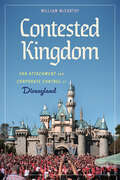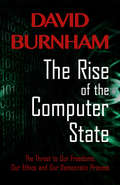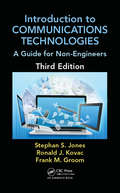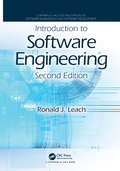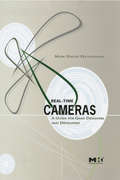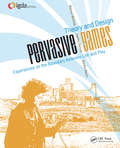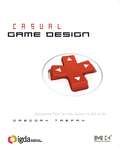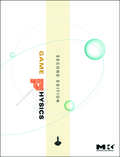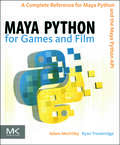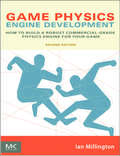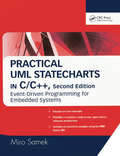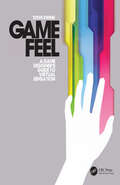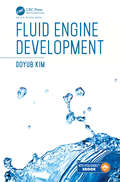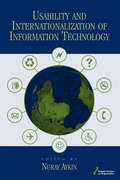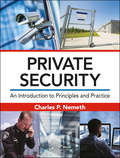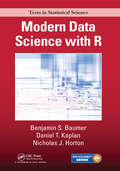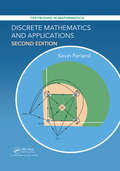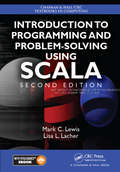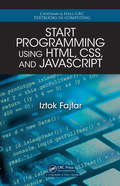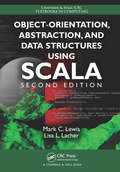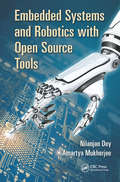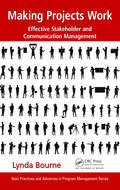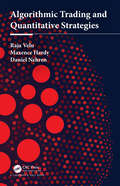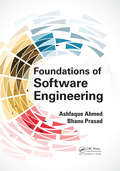- Table View
- List View
Fear, Hate, and Victimhood: How George Wallace Wrote the Donald Trump Playbook (Race, Rhetoric, and Media Series)
by Andrew E. StonerWhen Donald Trump announced his campaign for president in 2015, journalists, historians, and politicians alike attempted to compare his candidacy to that of Governor George Wallace. Like Trump, Wallace, who launched four presidential campaigns between 1964 and 1976, utilized rhetoric based in resentment, nationalism, and anger to sway and eventually captivate voters among America’s white majority. Though separated by almost half a century, the campaigns of both Wallace and Trump broke new grounds for political partisanship and divisiveness.In Fear, Hate, and Victimhood: How George Wallace Wrote the Donald Trump Playbook, author Andrew E. Stoner conducts a deep analysis of the two candidates, their campaigns, and their speeches and activities, as well as their coverage by the media, through the lens of demagogic rhetoric. Though past work on Wallace argues conventional politics overcame the candidate, Stoner makes the case that Wallace may in fact be a prelude to the more successful Trump campaign.Stoner considers how ideas about “in-group” and “out-group” mentalities operate in politics, how anti-establishment views permeate much of the rhetoric in question, and how expressions of victimhood often paradoxically characterize the language of a leader praised for “telling it like it is.” He also examines the role of political spectacle in each candidate’s campaigns, exploring how media struggles to respond to—let alone document—demagogic rhetoric.Ultimately, the author suggests that the Trump presidency can be understood as an actualized version of the Wallace presidency that never was. Though vast differences exist, the demagogic positioning of both men provides a framework to dissect these times—and perhaps a valuable warning about what is possible in our highly digitized information society.
Contested Kingdom: Fan Attachment and Corporate Control at Disneyland
by William McCarthyIn Contested Kingdom: Fan Attachment and Corporate Control at Disneyland, William McCarthy presents a groundbreaking study centered on the history of Disneyland and Disney theme park enthusiasts. Focusing on two unexplored yet interconnected phenomena—the dynamic relationship between the Disney corporation and Southern Californian fans in both online and physical park settings over a span of more than three decades—this volume sheds new light on the meaning and purpose of Disneyland. Through a comprehensive analysis of the interwoven dimensions of individuals, place, and cognitive, affective, and behavioral processes, McCarthy explores the fervent sense of place attachment experienced by the approximately one million annual passholders who visit the park. McCarthy’s analysis extends beyond the physical world of Disneyland by delving into the evolution of Disney fandom, discourse, commerce, and social formations in online social platforms like Usenet, web discussion boards, and social media. By employing a mixed-methods approach incorporating interviews, participant observation, surveys, and data analysis, this study establishes a novel analytical framework for comprehending the interrelationships between the Disney corporation, its fan communities, and online social platforms. As the first in-depth longitudinal analysis of the ongoing struggle on successive social platforms between fan users and a corporate entity, Contested Kingdom provides valuable insights for scholars and future investigations.
The Rise of the Computer State
by David BurnhamThe Rise of the Computer State is a comprehensive examination of the ways that computers and massive databases are enabling the nation's corporations and law enforcement agencies to steadily erode our privacy and manipulate and control the American people. This book was written in 1983 as a warning. Today it is a history. Most of its grim scenarios are now part of everyday life. The remedy proposed here, greater public oversight of industry and government, has not occurred, but a better one has not yet been found. While many individuals have willingly surrendered much of their privacy and all of us have lost some of it, the right to keep what remains is still worth protecting.
Introduction to Communications Technologies: A Guide for Non-Engineers, Third Edition
by Stephan Jones Ronald J. Kovac Frank M. GroomThanks to the advancement of faster processors within communication devices, there has been a rapid change in how information is modulated, multiplexed, managed, and moved. While formulas and functions are critical in creating the granular components and operations of individual technologies, understanding the applications and their purposes in the
Introduction to Software Engineering (Chapman & Hall/CRC Innovations in Software Engineering and Software Development Series)
by Ronald J. LeachPractical Guidance on the Efficient Development of High-Quality Software Introduction to Software Engineering, Second Edition equips students with the fundamentals to prepare them for satisfying careers as software engineers regardless of future changes in the field, even if the changes are unpredictable or disruptive in nature. Retaining the same organization as its predecessor, this second edition adds considerable material on open source and agile development models. The text helps students understand software development techniques and processes at a reasonably sophisticated level. Students acquire practical experience through team software projects. Throughout much of the book, a relatively large project is used to teach about the requirements, design, and coding of software. In addition, a continuing case study of an agile software development project offers a complete picture of how a successful agile project can work. The book covers each major phase of the software development life cycle, from developing software requirements to software maintenance. It also discusses project management and explains how to read software engineering literature. Three appendices describe software patents, command-line arguments, and flowcharts.
Real Time Cameras: A Guide for Game Designers and Developers
by Mark Haigh-HutchinsonThe control of cameras is as important in games as it is in cinema. How the camera tracks and moves determines our point of view and influences our attitude towards the content. A poorly designed camera system in a game can disrupt a users experience, while a well-designed one can make a good game into a great one. Breaks down the algorithms behind contemporary game camera systems, written by a leading expert in the area.
Pervasive Games: Theory and Design
by Markus Montola Jaakko Stenros Annika WaernEmerging quickly from the fast-paced growth of mobile communications and wireless technologies, pervasive games provide a worldwide network of potential play spaces. Now games can be designed to be played in public spaces like conferences, museums, communities, cities, buildings or other non-traditional game venues...and game designers need to unde
Casual Game Design: Designing Play for the Gamer in ALL of Us
by Gregory TrefryFrom Windows Solitaire to Bejeweled to Wii Tennis, casual games have radically changed the landscape of games. By simplifying gameplay and providing quick but intense blasts of engaging play, casual games have drawn in huge new audiences of players. To entertain and engage the casual player, game designers must learn to think about what makes casua
Game Physics
by David H. EberlyCreate physically realistic 3D Graphics environments with this introduction to the ideas and techniques behind the process. Author David H. Eberly includes simulations to introduce the key problems involved and then gradually reveals the mathematical and physical concepts needed to solve them.
Maya Python for Games and Film: A Complete Reference for the Maya Python API
by Adam Mechtley Ryan TrowbridgeThis book is among the first books to provide an in-depth look at how to implement Python with Maya,. It is an ideal resource for technical artists looking to boost productivity and enhance performance and interoperability. With this practical guide written by trusted authorities in the field, experienced technical artists will make the transition from the older MEL scripting language to Python and aspiring artists will save themselves time right from the beginning.
Game Physics Engine Development: How to Build a Robust Commercial-Grade Physics Engine for your Game
by Ian MillingtonPhysics is really important to game programmers who need to know how to add physical realism to their games. They need to take into account the laws of physics when creating a simulation or game engine, particularly in 3D computer graphics, for the purpose of making the effects appear more real to the observer or player.The game engine ne
Practical UML Statecharts in C/C++: Event-Driven Programming for Embedded Systems
by Miro SamekPractical UML Statecharts in C/C++ Second Edition bridges the gap between high-level abstract concepts of the Unified Modeling Language (UML) and the actual programming aspects of modern hierarchical state machines (UML statecharts). The book describes a lightweight, open source, event-driven infrastructure, called QP that enables direct manual cod
Game Feel: A Game Designer's Guide to Virtual Sensation
by Steve Swink"Game Feel" exposes "feel" as a hidden language in game design that no one has fully articulated yet. The language could be compared to the building blocks of music (time signatures, chord progressions, verse) - no matter the instruments, style or time period - these building blocks come into play. Feel and sensation are similar building blocks whe
Fluid Engine Development
by Doyub KimFrom the splash of breaking waves to turbulent swirling smoke, the mathematical dynamics of fluids are varied and continue to be one of the most challenging aspects in animation. Fluid Engine Development demonstrates how to create a working fluid engine through the use of particles and grids, and even a combination of the two. Core algorithms are explained from a developer’s perspective in a practical, approachable way that will not overwhelm readers. The Code Repository offers further opportunity for growth and discussion with continuously changing content and source codes. This book helps to serve as the ultimate guide to navigating complex fluid animation and development. Explains how to create a fluid simulation engine from scratch Offers an approach that is code-oriented rather than math-oriented, allowing readers to learn how fluid dynamics works with code, with downloadable code available Explores various kinds of simulation techniques for fluids using particles and grids Discusses practical issues such as data structure design and optimizations Covers core numerical tools including linear system and level set solvers
Usability and Internationalization of Information Technology (Human Factors and Ergonomics)
by Nuray AykinToday, more and more Web sites are providing content in multiple languages for targeted countries, and more and more products are being designed for cultural differences in mind. However, the concept of cross-cultural design has not yet become a strong force in the practitioners' and educators' agenda. This book looks at techniques, software, tools
Private Security: An Introduction to Principles and Practice
by Charles P. NemethThere are few textbooks available that outline the foundation of security principles while reflecting the modern practices of private security as an industry. Private Security: An Introduction to Principles and Practice takes a new approach to the subject of private sector security that will be welcome addition to the field. The book focuses on the recent history of the industry and the growing dynamic between private sector security and public safety and law enforcement. Coverage will include history and security theory, but emphasis is on current practice, reflecting the technology-driven, fast-paced, global security environment. Such topics covered include a history of the security industry, security law, risk management, physical security, Human Resources and personnel, investigations, institutional and industry-specific security, crisis and emergency planning, critical infrastructure protection, IT and computer security, and more. Rather than being reduced to single chapter coverage, homeland security and terrorism concepts are referenced throughout the book, as appropriate. Currently, it vital that private security entities work with public sector authorities seamlessly—at the state and federal levels—to share information and understand emerging risks and threats. This modern era of security requires an ongoing, holistic focus on the impact and implications of global terror incidents; as such, the book’s coverage of topics consciously takes this approach throughout. Highlights include: Details the myriad changes in security principles, and the practice of private security, particularly since 9/11 Focuses on both foundational theory but also examines current best practices—providing sample forms, documents, job descriptions, and functions—that security professionals must understand to perform and succeed Outlines the distinct, but growing, roles of private sector security companies versus the expansion of federal and state law enforcement security responsibilities Includes key terms, learning objectives, end of chapter questions, Web exercises, and numerous references—throughout the book—to enhance student learning Presents the full range of career options available for those looking entering the field of private security Includes nearly 400 full-color figures, illustrations, and photographs. Private Security: An Introduction to Principles and Practice provides the most comprehensive, up-to-date coverage of modern security issues and practices on the market. Professors will appreciate the new, fresh approach, while students get the most "bang for their buck," insofar as the real-world knowledge and tools needed to tackle their career in the ever-growing field of private industry security. An instructor’s manual with Exam questions, lesson plans, and chapter PowerPoint® slides are available upon qualified course adoption.
Modern Data Science with R (Chapman & Hall/CRC Texts in Statistical Science)
by Benjamin S. Baumer Daniel T. Kaplan Nicholas J. HortonModern Data Science with R is a comprehensive data science textbook for undergraduates that incorporates statistical and computational thinking to solve real-world problems with data. Rather than focus exclusively on case studies or programming syntax, this book illustrates how statistical programming in the state-of-the-art R/RStudio computing environment can be leveraged to extract meaningful information from a variety of data in the service of addressing compelling statistical questions. <P><P> Contemporary data science requires a tight integration of knowledge from statistics, computer science, mathematics, and a domain of application. This book will help readers with some background in statistics and modest prior experience with coding develop and practice the appropriate skills to tackle complex data science projects. The book features a number of exercises and has a flexible organization conducive to teaching a variety of semester courses.
Discrete Mathematics and Applications, Second Edition (Textbooks in Mathematics)
by Kevin FerlandThis book is intended for a one-semester course in discrete mathematics. Such a course is typically taken by mathematics, mathematics education, and computer science majors, usually in their sophomore year. Calculus is not a prerequisite to use this book. Part one focuses on how to write proofs, then moves on to topics in number theory, employing set theory in the process. Part two focuses on computations, combinatorics, graph theory, trees, and algorithms.
Introduction to Programming and Problem-Solving Using Scala (Chapman & Hall/CRC Textbooks in Computing)
by Mark C. Lewis Lisa LacherPraise for the first edition: "The well-written, comprehensive book…[is] aiming to become a de facto reference for the language and its features and capabilities. The pace is appropriate for beginners; programming concepts are introduced progressively through a range of examples and then used as tools for building applications in various domains, including sophisticated data structures and algorithms…Highly recommended. Students of all levels, faculty, and professionals/practitioners.—D. Papamichail, University of Miami in CHOICE Magazine Mark Lewis’ Introduction to the Art of Programming Using Scala was the first textbook to use Scala for introductory CS courses. Fully revised and expanded, the new edition of this popular text has been divided into two books. Introduction to Programming and Problem-Solving Using Scala is designed to be used in first semester college classrooms to teach students beginning programming with Scala. The book focuses on the key topics students need to know in an introductory course, while also highlighting the features that make Scala a great programming language to learn. The book is filled with end-of-chapter projects and exercises, and the authors have also posted a number of different supplements on the book website. Video lectures for each chapter in the book are also available on YouTube. The videos show construction of code from the ground up and this type of "live coding" is invaluable for learning to program, as it allows students into the mind of a more experienced programmer, where they can see the thought processes associated with the development of the code. About the Authors Mark Lewis is a Professor at Trinity University. He teaches a number of different courses, spanning from first semester introductory courses to advanced seminars. His research interests included simulations and modeling, programming languages, and numerical modeling of rings around planets with nearby moons. Lisa Lacher is an Assistant Professor at the University of Houston, Clear Lake with over 25 years of professional software development experience. She teaches a number of different courses spanning from first semester introductory courses to graduate level courses. Her research interests include Computer Science Education, Agile Software Development, Human Computer Interaction and Usability Engineering, as well as Measurement and Empirical Software Engineering.
Start Programming Using HTML, CSS, and JavaScript (Chapman & Hall/CRC Textbooks in Computing)
by Iztok FajfarThis text is a manual for undergraduate students in engineering and the natural sciences to discover how computer programming works. Using a dialog format between two students and a professor, the text teaches students how the mainstream web languages HTML, CSS, and JavaScript interact and how to harness their capabilities in practical settings. Each chapter focuses on a specific theme supported by a gradual development of engaging worked examples of live web documents and applications using the three languages.
Object-Orientation, Abstraction, and Data Structures Using Scala (Chapman & Hall/CRC Textbooks in Computing)
by Lisa L. Lacher Mark C. LewisMark Lewis’ Introduction to the Art of Programming Using Scala was the first textbook to use Scala for introductory CS courses. Fully revised and expanded, the new edition of this popular text has been divided into two books. Object-Orientation, Abstraction, and Data Structures Using Scala, Second Edition is intended to be used as a textbook for a second or third semester course in Computer Science. The Scala programming language provides powerful constructs for expressing both object orientation and abstraction. This book provides students with these tools of object orientation to help them structure solutions to larger, more complex problems, and to expand on their knowledge of abstraction so that they can make their code more powerful and flexible. The book also illustrates key concepts through the creation of data structures, showing how data structures can be written, and the strengths and weaknesses of each one. Libraries that provide the functionality needed to do real programming are also explored in the text, including GUIs, multithreading, and networking. The book is filled with end-of-chapter projects and exercises, and the authors have also posted a number of different supplements on the book website. Video lectures for each chapter in the book are also available on YouTube. The videos show construction of code from the ground up and this type of "live coding" is invaluable for learning to program, as it allows students into the mind of a more experienced programmer, where they can see the thought processes associated with the development of the code. About the Authors Mark Lewis is an Associate Professor at Trinity University. He teaches a number of different courses, spanning from first semester introductory courses to advanced seminars. His research interests included simulations and modeling, programming languages, and numerical modeling of rings around planets with nearby moons.? Lisa Lacher is an Assistant Professor at the University of Houston, Clear Lake with over 25 years of professional software development experience. She teaches a number of different courses spanning from first semester introductory courses to graduate level courses. Her research interests include Computer Science Education, Agile Software Development, Human Computer Interaction and Usability Engineering, as well as Measurement and Empirical Software Engineering.
Embedded Systems and Robotics with Open Source Tools
by Nilanjan Dey Amartya MukherjeeEmbedded Systems and Robotics with Open-Source Tools provides easy-to-understand and easy-to-implement guidance for rapid prototype development. Designed for readers unfamiliar with advanced computing technologies, this highly accessible book: Describes several cutting-edge open-source software and hardware technologies Examines a number of embedded computer systems and their practical applications Includes detailed projects for applying rapid prototype development skills in real time Embedded Systems and Robotics with Open-Source Tools effectively demonstrates that, with the help of high-performance microprocessors, microcontrollers, and highly optimized algorithms, one can develop smarter embedded devices.
Making Projects Work: Effective Stakeholder and Communication Management (Best Practices in Portfolio, Program, and Project Management)
by Lynda BourneThis book provides a framework for understanding and managing factors required for achieving successful project and program outcomes. It presents guidelines to help readers develop an understanding of governance and its connection to strategy as the starting point for decisions on what work needs to be done. The book describes how to craft appropriate communication strategies to develop and maintain successful relationships with stakeholders. It highlights the strengths and weaknesses of existing project controls and outlines effective communication techniques for managing expectations and acquiring the support required for successful delivery.
Algorithmic Trading and Quantitative Strategies
by Raja VeluAlgorithmic Trading and Quantitative Strategies provides an in-depth overview of this growing field with a unique mix of quantitative rigor and practitioner’s hands-on experience. The focus on empirical modeling and practical know-how makes this book a valuable resource for students and professionals. The book starts with the often overlooked context of why and how we trade via a detailed introduction to market structure and quantitative microstructure models. The authors then present the necessary quantitative toolbox including more advanced machine learning models needed to successfully operate in the field. They next discuss the subject of quantitative trading, alpha generation, active portfolio management and more recent topics like news and sentiment analytics. The last main topic of execution algorithms is covered in detail with emphasis on the state of the field and critical topics including the elusive concept of market impact. The book concludes with a discussion on the technology infrastructure necessary to implement algorithmic strategies in large-scale production settings. A git-hub repository includes data-sets and explanatory/exercise Jupyter notebooks. The exercises involve adding the correct code to solve the particular analysis/problem.
Foundations of Software Engineering
by Ashfaque Ahmed Bhanu PrasadThe best way to learn software engineering is by understanding its core and peripheral areas. Foundations of Software Engineering provides in-depth coverage of the areas of software engineering that are essential for becoming proficient in the field. The book devotes a complete chapter to each of the core areas. Several peripheral areas are also explained by assigning a separate chapter to each of them. Rather than using UML or other formal notations, the content in this book is explained in easy-to-understand language. Basic programming knowledge using an object-oriented language is helpful to understand the material in this book. The knowledge gained from this book can be readily used in other relevant courses or in real-world software development environments.This textbook educates students in software engineering principles. It covers almost all facets of software engineering, including requirement engineering, system specifications, system modeling, system architecture, system implementation, and system testing. Emphasizing practical issues, such as feasibility studies, this book explains how to add and develop software requirements to evolve software systems.This book was written after receiving feedback from several professors and software engineers. What resulted is a textbook on software engineering that not only covers the theory of software engineering but also presents real-world insights to aid students in proper implementation. Students learn key concepts through carefully explained and illustrated theories, as well as concrete examples and a complete case study using Java. Source code is also available on the book’s website. The examples and case studies increase in complexity as the book progresses to help students build a practical understanding of the required theories and applications.

